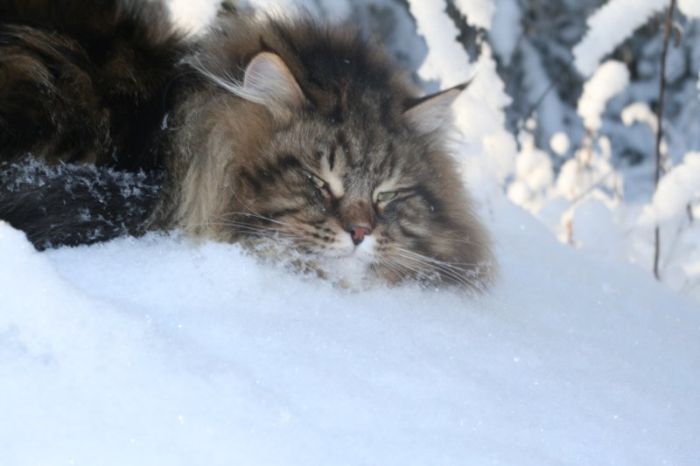|
|
Amur Ezra, Siberian Cat In The Winter
|
Siberians express the three natural types of feline fur: guard hairs, awn hairs, and down. These three layers protect the cat from the Russian weather extremes, and provide a hardy, easy to care for coat today. The fur is textured but glossy, which decreases the occurrence of matting. A twice weekly combing is enough to keep the coat in good condition.
As with most other cat breeds, color varieties of the Siberian vary and all colors, such as tabby, solid, tortoiseshell and colorpoint are genetically possible. The Siberian cat breed does not have any unusual, distinct, or unique fur colorations or patterns.
Most breeders, enthusiasts, organizations, main registries such as TICA and the WCF, and countries accept the color point coloration as being natural. Color point Siberians are also known as "Neva-Masquerade": Neva for the river where they are said to have originated, and masquerade, for the mask-like coloration.
Siberian cats moult once or twice a year. The first moult is at the end of winter. The winter moult is instigated not by a change in temperature but by a change in day length. Many Siberians will experience a less intense "mini moult" at the end of the summer season.
|
|









